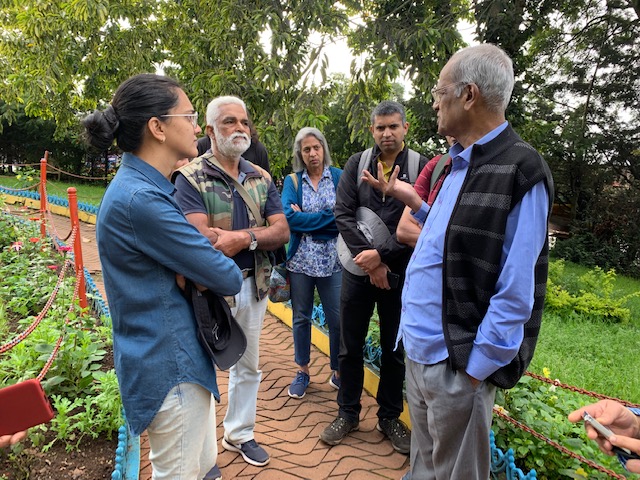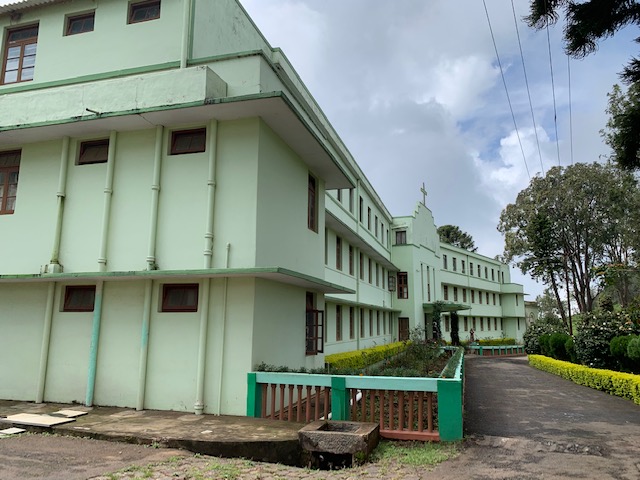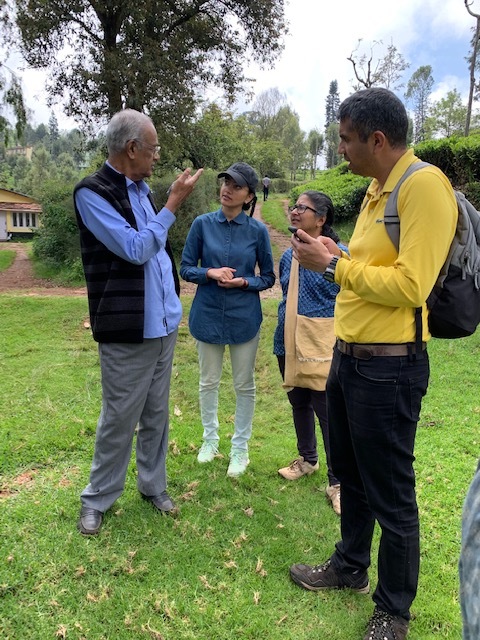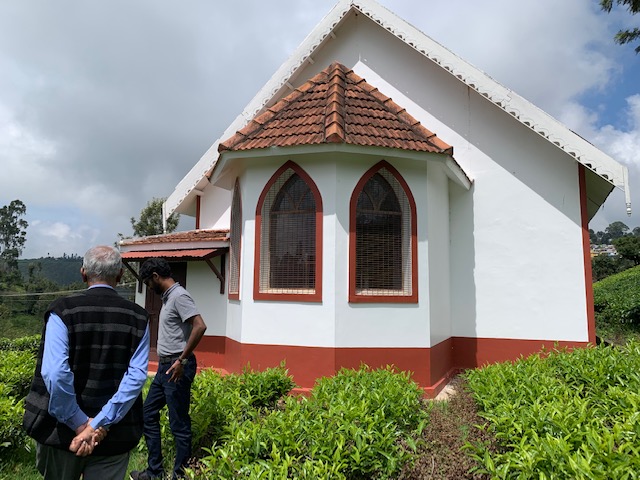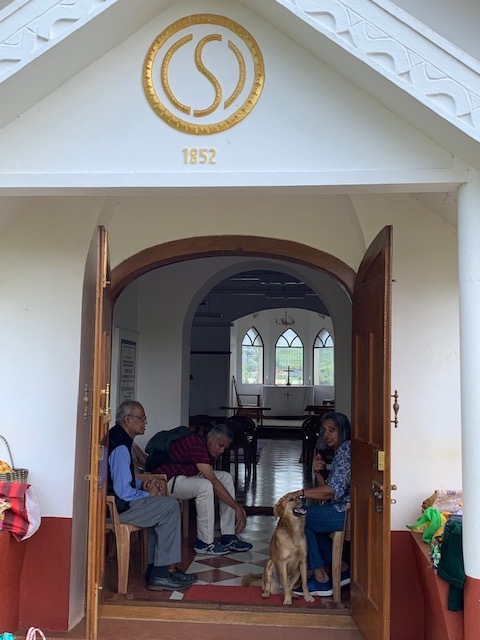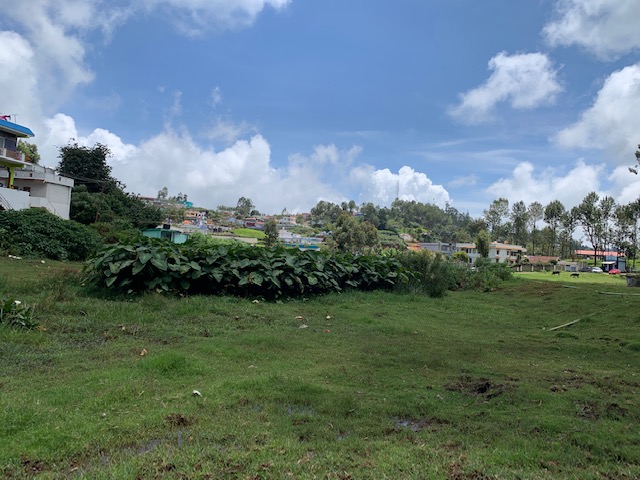A name can evoke a lot of memories. What are the stories that you know, of the place you are a part of? Join us on this first walking tour as we unearth the stories behind the seemingly obvious spaces and sites, right here in the heart of Kotagiri.
Led by our rich treasure trove of heritage knowledge, Reverend Phillip Mulley, this will take you back in time at a healthy walking pace as you absorb the history of the place.
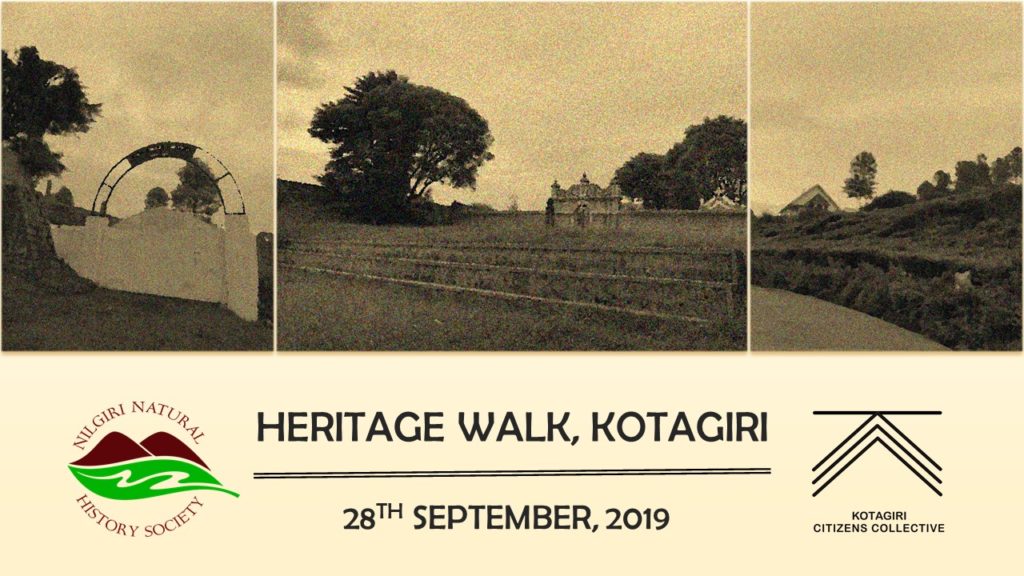
Date: 28th September, 2019
Time and Place: 9.00 am, at Johnson Square
Duration: 2.5 -3 hours (about 4 kms around Kotagiri)
Trail difficulty: Moderate
Open for public
To confirm, write to contact@nnhs.in
Sharada: 9486232724
A short account of the walk (Sharada Ramadass)
It is believed that the Nobel Laureate, Pearl S Buck once said, “If you want to understand today, you have to search yesterday”. And so it was, that many cultural history enthusiasts from across the Nilgiris, set out on a walk to look back into the past of some of the landmarks of Kotagiri. Organised by NNHS (Nilgiri Natural History Society) and KCC (Kotagiri Citizens Collective), the walk was guided by our renowned local historian and anthropologist, Reverend Phillip K Mulley as he took us down memory lane during the 4-km long walk.
The group assembled at Johnson square on a sunny morning at 9 am, where we traced the story of the Kota temple that stands there today testament to the Kota settlement in the region from way back in the early 1900s. The current temple as it stands was renovated/ rebuilt sometime in the 1950-s, the reverend pointed out indicating how the settlement moved out to the current location at Pudu Kotagiri but still have their annual rituals at the temple that is now ensconced within the Nehru Park. Attention was brought to the fact that the place was most likely dotted with wetlands way back before Major Mourant laid the current access road to Kotagiri. The discussion also revealed the lives of the then Kotas, as artisans, their interactions with other communities such as the Badagas and their cardinal annual Kambatarayan festival that worship their male and female deity forms of Iyyanur and Ammanur.
A further walk brought us to the NAWA (Nilgiri Adivasi Welfare Association) centre which dates back to the 1940-50s, founded by Dr. Narasimhan, who did pioneering work in providing medical facilities and healthcare to the Irulas and Kurumbas around the Kolikarai area. Their work later expanded to include other programmes relating to tribal welfare, under the leadership of Ms. Victoria Amstrong, who, inspired by Dr. Narasimhan’s work, joined NAWA as a volunteer only to stay on till the end.
The winding road took us to our next stop, at the Kota Hall. While many believed it had some association with the Kota community itself, myths to that end were busted when the reverend revealed that it was built by the then collector, E B Thomas and now in use by the Franciscan Brothers. The narrative on the various missionaries who established bases in the Nilgiris in colonial times took us to our next stop at the oldest church of Kotagiri – Christ Church. A quaint and small church, built in those times for the Europeans, the church was also the final resting place of General Gibson, and a plaque reminding us of the same, can still be found on the wall.
The steep uphill from the church took us back to the modern all-too-familiar facades of Ramchand from where we followed the natural topographical downhill gradient to rifle range, which was recently in the news for community driven wetland restoration initiatives. What was a natural wetland that collected water flows from the nearby higher regions, it was converted into a rifle practice range under colonial times and more recently, been on the receiving end of urban trash inflow and covered with invasive plant species.
A further walk from the wetland brought us down to the Donington Bridge as we looked down at the water sources of yore slowly getting murkier under duress from modern human activities. The last stop on the walk route was one of the oldest bungalows in Kotagiri built by Blair (of Port Blair fame), now renovated to the taste and needs of modern times. History may not change times past but an understanding of it might well inform the future. A message relevant, as the Nilgiris enters a new age of conservation (whether ecological or cultural) amidst fast changing tides of modern development.

